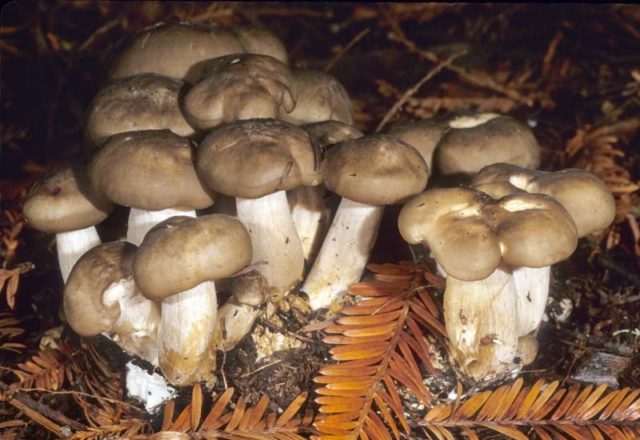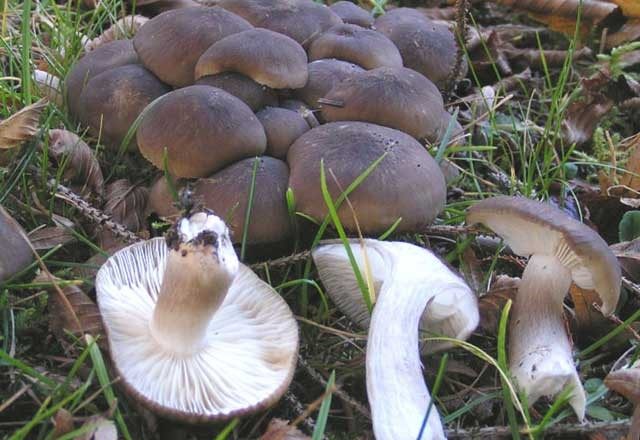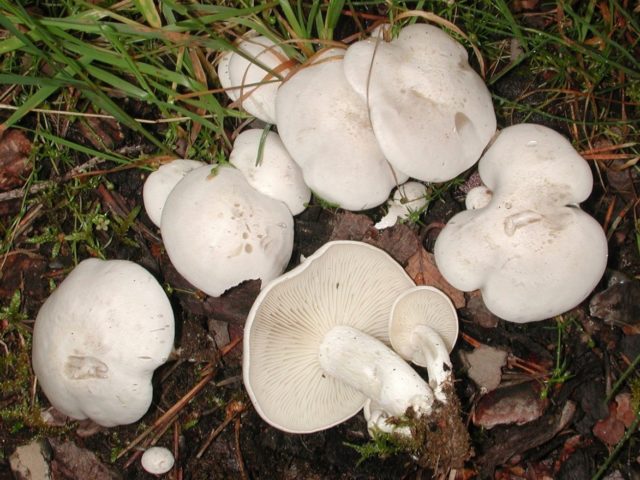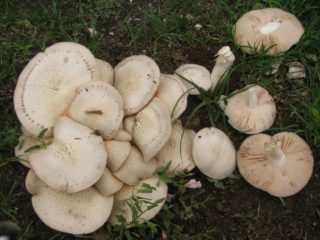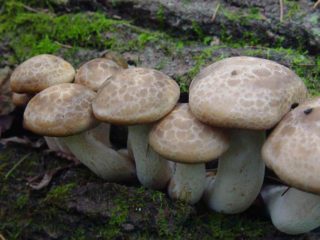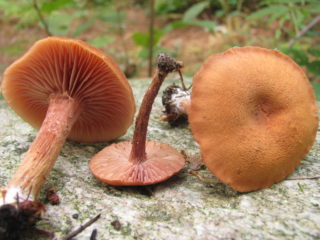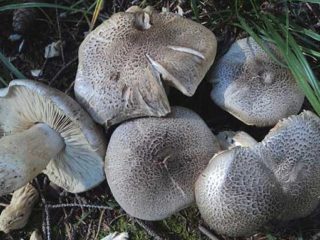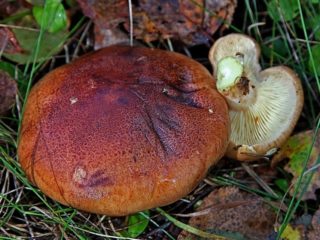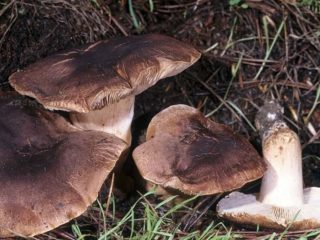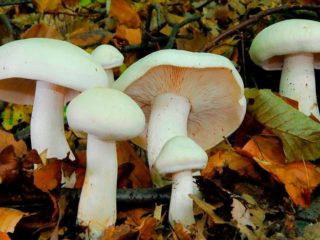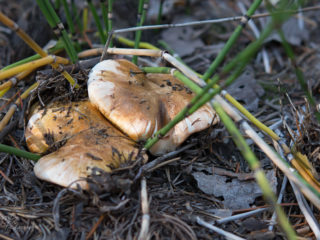Content
The crowded row belongs to the Lyophyllum family, the genus Lyophyllum. Their fruiting bodies grow together quite tightly and are difficult to separate. Conditionally edible species.
Where crowded rows grow
Lyophyllumdecastes is a late mushroom. The fruiting period begins at the end of August and lasts until November. This species can be found in pine and deciduous forests, gardens, parks, meadows, roadsides, and herbs.
They grow mainly in numerous groups, trying to grow together with bases or legs. Places are chosen almost everywhere.Rarely grow alone. The fungus is common in the temperate zone. There are in Japan, the Far East, and Scandinavian countries.
What crowded rows look like
The photo clearly demonstrates the external signs of the crowded row, the description complements the characteristics of the mushroom.
The cap of the crowded row is large, reaching a diameter of 15 cm. In the first days, the shape resembles a pillow with a convex edge. As it matures, it becomes spread out, often losing its geometric regularity. The edge turns outward and becomes wavy. The surface of the upper part is gray-brown, off-white. The color in the center of the cap is somewhat brighter than along the edge. After rain or in a damp forest, the skin becomes sticky, slimy, and sometimes covered with dark scales. Often there are attached pieces of dirt on the cap.
The leg of the row is solid, long, and has a cylindrical shape. It grows from 4 to 11 cm. There is a noticeable thickening at the very base. Thickness 0.5-1.5 cm. The color of the lower part varies from white to gray. The surface is smooth. The pulp is dense. As a rule, mushrooms grow together with legs, so they are twisted, deformed, and fused.
The structure of the crowded row is fibrous and mealy. The pulp is light brown. It has a characteristic “row” smell. There is a hymenophore under the cap. White plates are located frequently. They can be attached or free. The spore powder is also white.
Is it possible to eat crowded rows?
Ryadovka crowded is an edible mushroom, but of poor quality. This variety has quite dense flesh, so it is not popular.
Taste qualities of the crowded ryadovka mushroom
Due to the high protein content in the pulp, the mushroom is a complete replacement for chicken meat.The pulp does not have a pronounced taste. The taste is similar to chicken. For cooking, it is recommended to use young crowded rows. This variety can be prepared in any form.
Benefits and harm to the body
Mushrooms have beneficial, medicinal properties for the body. All thanks to the chemical composition of the fruiting bodies. Clitocin and fomecin destroy pathogenic microorganisms and cancer cells, performing the functions of an antibiotic. In addition, the crowded rows contain:
- proteins;
- cellulose;
- carbohydrates;
- fats;
- glucose, fructose;
- vitamins: A, B, C, D2, D7 and PP;
- minerals potassium, calcium, copper, sodium, phosphorus, manganese, zinc, iron, selenium;
- polysaccharides;
- amino acids;
- ergosterol.
It is believed that regular consumption of crowded rows increases immunity, has a positive effect on the gastrointestinal tract, stimulates the regeneration of liver cells, and promotes the removal of waste and toxins. The positive qualities of forest plants do not end there. They also activate the cardiovascular system, normalize blood sugar and heart rate.
Chemical analysis of the pulp determined the main properties of the mushrooms:
- antibacterial;
- anti-inflammatory;
- antiviral;
- antioxidant;
- immunomodulatory.
They should not be used for pancreatitis, low acidity, or gallbladder dysfunction. Raw rows lead to intestinal disorders. Old copies do more harm than good.
False doubles
Taking into account the characteristic way of growth, these mushrooms are difficult to confuse with other species. However, there are still doubles.
The row is fused. Cap size 3-8 cm. Cushion-shaped, convex shape. The edges are folded. The color of the upper part is white, yellow is less common. The center is somewhat darker. The pulp is light. The smell is weak. The plates are frequent and thin. The maximum height of the leg is 7 cm. The structure is dense, hard, fibrous. The legs are often crowded or deformed. They are found in the form of intergrowths of several plants. It begins to bear fruit in late summer. Grows in forest clearings, along roads. Select sparse areas of terrain. Prefers poor soils.
The mushroom is considered edible, but, according to people who have tried it, it is not tasty. Recently, during tests it was classified as an inedible, even poisonous type. Found in large groups.
The row is smoky, similar to the crowded row in a group way of growth. The color of the cap is grey. Its shape can be different: semicircular, flattened, depressed. It all depends on the age of the plant. The pulp is white, hard, dense. When mature, it acquires a loose structure. There is a light fruity-floral scent. The leg is thick, club-shaped. The color is smoky gray.
This species grows in mixed forests, spruce forests, and gardens. The fruiting period begins in August-October. When it appears, it forms circles and rows.
The mushrooms can be confused with other plate-like varieties that grow in clumps. Among them are the crowded collibium, meadow honey fungus, and armored row.
Collection rules
It is better to go to the forest early in the morning. In the evening the search will be difficult due to poor visibility. Cut the legs with a knife under the base so that the mycelium remains in the ground. A basket, bag, or bucket are suitable for harvesting. Forest plants have dense pulp, so they do not break during transportation.Each specimen should be cleaned of sand and dry debris.
You should be extremely careful not to confuse the edible variety with its outwardly similar false counterparts. It is recommended to look again at home and sort the gifts of the forest. Young mushrooms are suitable for further processing.
How to prepare crowded rows
This species is classified as conditionally edible, so it is allowed to be consumed only after heat treatment. Be sure to boil the mushrooms for 15 minutes in clean water. Thus, all hazardous substances are destroyed.
Recipe for making crowded row:
- Clean, rinse under running water.
- Place in a container and add salt.
- Cook for 40 minutes over medium heat.
- Strain.
- Add vegetable oil, onion, cut into half rings.
This species can also be salted, fried, pickled, like other edible plate varieties. The taste of the row is often compared to oyster mushrooms.
Conclusion
Ryadovka crowded is a late-ripening mushroom. Appears in forests and gardens at the end of summer. Fruits until the end of autumn. Distributed in mixed forests throughout Russia. Mushroom pickers often use this species for pickling. During the collection process, special attention should be paid to the external signs of the mushroom, so as not to confuse it with false doubles.
